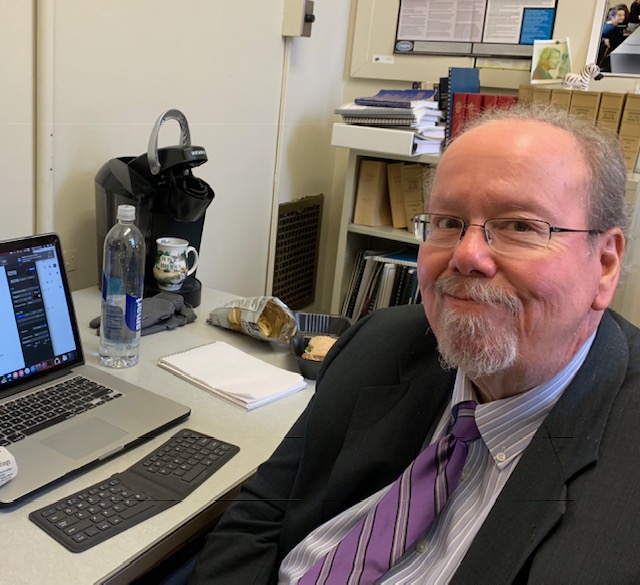
By GARRY RAYNO, Distant Dome
This year is the 30th anniversary of the state Supreme Court’s Claremont education decision, but the fundamental issues raised by the five plaintiff communities is not yet “settled law.”
Currently two lawsuits over education funding and what constitutes an adequate education are before Rockingham County Superior Court judge David Ruoff, who said last week he hopes to have rulings in 60 days, but that may be a little wishful thinking by the judge.
Claremont was not the first lawsuit filed over the state’s education system and its funding, there were two cases in the decades before Claremont.
One suit produced the Augenblick formula developed to provide greater state aid to financially struggling districts under the then distribution system.
The formula would have done the job intended if the legislature had ever fully funded it, but it never did and the fiscal disparities continued unchecked.
That agreement was not the first, nor the last time, the legislature has failed to live up to its public education promises.
However, the original Claremont decision was the first time the issue had gotten to the state highest court with the potential for major upheaval in both education funding and the state’s tax system.
The court’s initial Claremont decision was a carefully drawn opinion from Chief Justice David Brock saying under the New Hampshire constitution, the state has a fundamental obligation to provide an education to all its students, the education has to be adequate and the state has to pay for that adequate education.
The court clearly said it is up to the legislature to decide what is an adequate education, what it costs and how it would pay for it.
The court did not take or usurp the legislature’s or executive branch’s authority for developing policy or taxation but did assign its highest bar for satisfying its fundamental requirements as it would for any constitutional question.
The first decision was released Dec. 30, 1993 and four years later the Claremont II decision was released on Dec. 17, 1997.
This decision was also a clear and direct decision that explained its reasons for overturning the lower court’s decision that the state education funding system was constitutional.
“In this appeal we hold that the present system of financing elementary and secondary public education in New Hampshire is unconstitutional. To hold otherwise would be to effectively conclude that it is reasonable, in discharging a state obligation, to tax property owners in one town or city as much as four times the amount taxed to others similarly situated in other towns or cities. This is precisely the kind of taxation and fiscal mischief from which the framers of our State Constitution took strong steps to protect our citizens. The procedural history of the case and the reasons for our decision follow,” Brock wrote for the majority in the 4-1 decision with Justice Sherman Horton dissenting.
Later in his decision Brock writes, “We agree with Justice Horton that we were not appointed to establish educational policy, nor to determine the proper way to finance its implementation. That is why we leave such matters, consistent with the Constitution, to the two co-equal branches of government and why we did so in the unanimous opinion of this court in Claremont I. We disagree with him that the taxation of property to support education must reach the level of confiscation before a constitutional threshold is crossed. It is our duty to uphold and implement the New Hampshire Constitution, and we have done so today.”
The constitutional phase at issue is proportional and reasonable and it has still not been settled as one of the cases before Ruoff seeks to have the state’s process for administering the Statewide Education Property Tax declared unconstitutional.
The Legislature and governor could have easily met the requirements laid out by the two Claremont decisions and been done with it. The guidelines are not complicated, but do require political will.
Addressing the court’s decision does mean more state money to equalize the burden across the state so one community’s tax burden is not four times that of another community and these days approaching 10 times.
This is not a partisan failure. The state has been out of compliance with the two court orders for 30 years, and both Republicans and Democrats bear failure’s burden and both tried to circumvent the court’s oversight by proposed constitutional amendments that have to date failed miserably as most lawmakers realize removing the legal chains mean backtracking on the gains that have been achieved.
At the time the legislature first attempted to address the court’s decisions, the biggest piece of additional state aid was the Statewide Education Property Tax.
In reality, property taxpayers were already paying the new levy, all the legislature did was make a portion of the local school property taxes, a state tax equalized across the state and not just within a community.
Nothing like addressing a court decision on unfair property taxation with a property tax, which is what the legislature did, but at a rate much higher than the $1.44 per $1,000 of equalized valuation it is for 2023.
When it was approved by the 1999 legislature, the rate was $6.60 per $1,000 of equalized valuation.
That was high enough to make a significant difference to the property poor towns and to the taxpayers in towns on the other end of the financial spectrum which saw their property taxes increase, but still were lower than the rates for taxpayers in property poor communities.
It did not take long for the property wealthy communities to complain loudly — and with the best legal help money can buy — sue the state over the tax.
The legislature at first began by dropping the rate to remove many “donor towns” and then in 2011 decided to allow the towns to retain the money they raised through the tax that was above what was needed to meet the state constitutional obligation to provide an adequate education, which today is $4,100 per student, but for the past decade was in the $3,636 range while the state average cost of educating a high school student is over $20,000 per pupil.
How much the state contributes to an adequate education the court said it had to pay is the subject of the ConVal suit before Ruoff.
When the legislature first set the cost of an adequate education, it based those costs on what several of the largest school districts in the state pay per pupil, and removed such obligations as transportation, sports and other after school activities, and capital costs for buildings etc.
The lawmakers also used larger than average student to teacher ratios and adjusted other cost drivers to lower the cost to a figure the state could pay without upending the state’s tax system, i.e. adding an income or sales tax or even a value added tax as proposed by former Gov. Jeanne Shaheen but never as a formal legislative proposal.
The other money pot lawmakers eyed was casino gambling, but that has yet to pass the House.
The last legislative session with two active lawsuits pending and a multiple hundred million dollar revenue surplus, they added well over $150 million for public education, much of it from the statewide property tax after a $100 million one-year vacation when the state actually paid that much of it.
But the issue of the state property taxes’ constitutionality and the cost of an adequate education are still being litigated 30 years after the court ruled.
Think of the time and money the state would have saved, if 30 years ago, it had proposed a significant change in how the state raises money for public education, making it more equitable for students and taxpayers.
Where would some of those deprived students be today and where would some of the property poor communities caught in an economic death spiral be today if the legislature had the political will and courage to change the system and ultimately the state, so that it would have been more equitable?
Garry Rayno may be reached at garry.rayno@yahoo.com.
Distant Dome by veteran journalist Garry Rayno explores a broader perspective on the State House and state happenings for InDepthNH.org. Over his three-decade career, Rayno covered the NH State House for the New Hampshire Union Leader and Foster’s Daily Democrat. During his career, his coverage spanned the news spectrum, from local planning, school and select boards, to national issues such as electric industry deregulation and Presidential primaries. Rayno lives with his wife Carolyn in New London.






